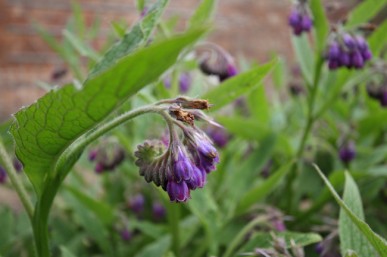by Penny Woodward

Rhys Benbow with his truck and sheep manure

The Gift of the Wooly Beast
In searching for the best manure to use in my garden I drew up a list of requirements. I needed to be sure that:
1.It was not full of chemicals like pesticides and worming agents.
2. It was easy to handle.
3. It hadn’t travelled too far to get to me.
4. It wasn’t full of weed seed.
5. It wasn’t too fresh.
6. It wasn’t too expensive.
The best result would be a nearby organic farm that was happy for me to collect the manure for free. Unfortunately that doesn’t exist in my area and organic farmers these days realise the value of their manure and either use it themselves or charge well (quite legitimately) for it to be removed. Local chook farms are not organic as the manure is full of the pesticides used to keep pests at bay, a definite no! I have used local horse manure, but always compost it first as I never know whether the horses have been recently wormed. Although horse manure has weeds, if I collect it locally, they will be local weeds so chances are I already have them in the garden. But last year I found an alternative solution. I discovered The Gift of the Wooly Beast (lovely name) and since then this product has been the only manure I have used in the garden. Read more
By Penny Woodward

Comfrey has lovely bell shaped flowers

A form of Russian comfrey with deep purple blue flowers
Comfrey (Symphytum species) is a multi-purpose plant that has a place in every organic and permaculture garden. It comes originally from Europe and is an herbaceous perennial in the Boraginaceae family. It’s natural habitat is damp, grassy places like river banks and ditches. The large, hairy leaves grow in a clump up to a height of about 1m and about 1m across. Flowers are bell-like, grow in clusters and can be mauve, purple, pink and white. Read more

Perennial chamomile adds calcium and ‘sweetens’ the compost.
Just as the success of a meal depends on the quality of the ingredients, so too does the success of a compost heap. If you add only kitchen scraps you’re likely to end up with a slimy, black mess and if it’s all leaves and twigs then the chances are that is what will still be there months later. The fine detail of a compost recipe varies depending on the expert you are consulting, but all compost systems require free drainage, adequate moisture and a mixture of strawy, open material and green plant tissue. The purpose of composting is to break down garden and kitchen ‘waste’ into humus that can then be added to the garden to supply nutrients in a form that can be readily used by plants. Read more





